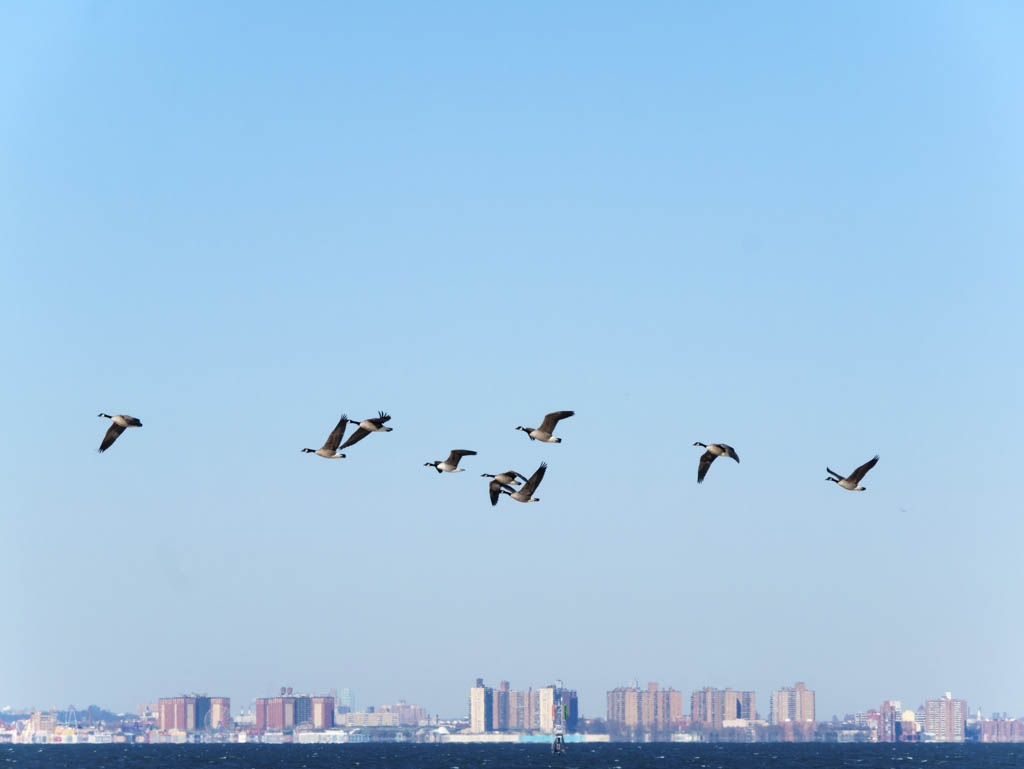By KAREN RAPOLLA
Staff Writer
The Monmouth County Audubon Society (MCAS) is holding a Sandy Hook bird watching walk on Dec. 10. The walk will be led by members of the MCAS, a chapter of the National Audubon Society.
The MCAS members are very familiar with Sandy Hook and its many species of birds. They are dedicated to the enjoyment and study of nature, wildlife conservation, habitat protection and education about wildlife.
“Many species of ducks which breed in the Arctic spend the winter in the area. They seek protection in the coves along Sandy Hook and usually remain here most of the winter. In addition, hawks continue to hunt here all winter, and they’re fascinating to watch,” said Stuart Malmid, first vice president of MCAS and one of the leaders of the bird walk.
In addition to the many varieties of species that populate the coastal land on a seasonal as well as yearly basis, there is always the opportunity to see a rare variety that bird watchers seldom get a chance to see, and seasonal watchers are on the lookout for them.
“We don’t discount the possibility of seeing some really rare birds. It takes some time to find one rare duck in a flock of several hundred, but the more eyes searching the flock, the better our chances,” said Malmid.
Malmid, of Monroe Township in Middlesex County, has been a member of the Audubon Society for over 30 years. He keeps a Sandy Hook list of birds that he has spotted over the years along with the dates.
“I’ve kept track of all the birds I’ve seen there since day one. Sandy Hook is considered a migrant trap, it is reverse in terms of migration, the end of the line in terms of birds going north,” he said.
The area for local bird watching is a reliable and popular oasis. During migration, he goes there to bird watch two to three times per week, sometimes more.
Malmid was introduced to bird watching 32 years ago when he read in the New York Times a little blurb about a New York City Audubon Society-sponsored whale watching excursion in Provincetown, Massachusetts, at the end of the Cape. As fate would have it, he decided to take the adventurous trip, and on the excursion they also did some bird watching, which he found very interesting.
The Long-billed Murrelet was the most rare bird he has ever seen at Sandy Hook in 2007.
“The Long-billed Murrelet is actually a West Coast bird that got lost. Even on the West Coast that bird is not common to spot,” said Malmid.
At the walk, participants will be guided by MCAS members, and they expect to tally the number of species that could include Cardinals, Chickadees and different species of loons, gulls and ducks.
“We don’t go in with expectations, and there is always the chance to see a bird that is very uncommon for the seasonal area. Although 98 percent of the warmer climate birds have migrated, there is always a straggler here and there. There is always the chance to spot a lost bird. It is also marvelous to see how different the same species of some birds look in autumn, which is drabber, than in spring, with all [their] colors and feathers so vibrant,” noted Malmid.
Michael Carroll, a local photographer who resides in Shrewsbury, has captured some exquisite photographs at Sandy Hook, including the Turkey Vulture and a flock of Canadian Geese flying over Lower New York Bay.
The free trip is open to all (members and non-members). Advance registration is not required. Coastal weather can be blustery, so dress appropriately, wear comfortable shoes and bring binoculars, cameras and field guides. In case of questionable weather, check the organization’s website for trip updates at www.monmouthaudubon.org.
Anyone interested in participating should meet at 10 a.m. in the parking lot by the Old Visitor Center at Sandy Hook.

